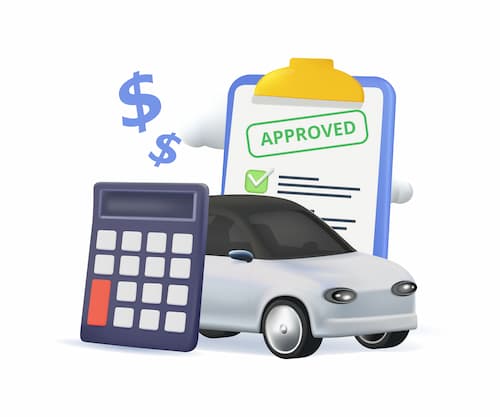How to lower car insurance rates
There are a lot of ways to reduce car insurance premiums, some of which can be done immediately and other that take a little time. Below we've outlined the best tips to lower car insurance rates.
1. Maximize your auto insurance discounts
Car insurance discounts vary by insurance company, but the standard ones are for safety features, low mileage, having more than one car insured with the same company and remaining with the same insurance company over many years. Below we'll highlight some of the more common ones, and our guide to car insurance discounts explains the topic in detail, providing examples of how much you save and how the discounts are applied to your policy.
Low mileage: If you drive less than 7,500 miles per year, you may qualify for a low mileage car insurance discount, typically 5 to 15 percent. And some car insurance companies offer a commuter discount if you use public transportation during the week.
Multi-car: You can get a multi-car discount if you insure more than one car on your policy. Expect 10 to 25% savings off your collision, comprehensive and liability premiums.
Safety features: Car insurance companies offer various discounts for anti-lock brakes, automatic seat belts, and airbags. Similarly, anti-theft devices such as car alarms and tracking systems (e.g., LoJack) may also get you an insurance discount because they reduce the chances of your car being stolen or vandalized. These types of discounts range from 5 to 30%.
2. Take a defensive driving course
If you've got a clean driving record and want to take a traffic class to get a lower car insurance rate, insurers typically offer a 5 to 15% discount on liability and collision coverages for three years.
However, there may be some caveats depending on your state laws and insurance company. For example, only drivers over age 25 may be eligible for the discount, or sometimes all drivers of the insured vehicle must take the course to qualify.
Traffic school courses vary but typically, they're four to six hours, are offered in person, online or both, cost between $25 and $75, and cover a series of lessons about traffic safety.
In most cases, taking a driver safety class will either remove points from your record for minor violations or give you a discount, but not both.
3. Increase your deductible
Increasing your deductibleThe deductible is the amount you pay out of pocket for a covered loss when you file a claim. from $200 to $500 can make you eligible for a 15 to 30% premium discount, while raising the deductible to $1,000 can save you up to 40%. This applies only to the comprehensive and collision portions of your policy, not the baseline amount you pay for the entire policy.
Your savings from hiking deductibles will vary widely depending on the state in which you live, the cost of your coverage after taking any other discounts, your driving record and your car's cost to repair or replace.
4. Keep an eye on your credit report
Your credit history is one of many risk factors that most auto insurance companies evaluate when setting rates (in a few states, it's not permissible by law). Paying your bills on time and maintaining a solid credit history will help keep your auto and home insurance rates lower.
If you have poor credit, don’t despair. You can find tips on improving your credit and trim auto insurance costs in our car insurance guide for drivers with bad credit.
5. Drive safely
You may be eligible for a price break on your car insurance policy if you have no accidents or traffic violations for a specified period (usually three years -- but a few companies will look back five years). Even a single speeding ticket can increase your car insurance rates by 11 to 13%, depending on how fast you were going compared to the speed limit and your state laws.
6. Buy a safe car
Cars are rated on a risk scale for auto insurance purposes. Generally, the fewer accident claims people file for a particular car model, the lower the rate to insure it. Insurance companies also take into account the safety features. You can research how well vehicles protect occupants in a crash and see what crash-avoidance safety features vehicles have by visiting the Insurance Institute for Highway Safety Vehicle Safety Ratings page.
7. Bundle insurance policies
Homeowners get cheaper rates because insurance companies deem them as lower risk, meaning they file fewer claims, but you can save even more by purchasing your home insurance and auto insurance policies from the same provider.
The nationwide average car insurance discount given for bundling home and auto insurance is 8%. Bundling renters and car insurance also earns a discount, with the nationwide average being around 5%. The nationwide average homeowners insurance discount given for bundling is 20 percent.
8. Paid in full discount
If you pay your car insurance policy premiumThe payment required for an insurance policy to remain in force. Auto insurance premiums are quoted for either 6-month or annual policy periods. upfront and in full, you usually get a 5 to 10% discount.
9. Drop comprehensive and collision if you don’t need it
Collision and comprehensive coverages are optional. You may not need the protection if you have an older car that you own outright. If your vehicle is more than 10 years old or worth less than $3,000, consider dropping these coverages.
10. Shop around and compare car insurance quotes
No two car insurance companies will charge the same amount for a policy, so it pays to shop around to get the lowest rates. Each car insurer uses its own formula to set rates, so the price for car insurance can vary by hundreds of dollars. Your current insurer may assess life changes and accidents differently so that you may find a cheaper rate with a different company. That’s why it pays to compare car insurance quotes at least 45 days before your current policy is set to renew, but also at these times:
- You got married
- You moved
- You had an accident
- You bought a car
- You’re adding a teen driver to the household
You should always get at least three quotes and be sure to compare the same amount of coverage across the board. You’ll also want to consider the customer service ratings of companies you’re considering.
Why is car insurance so expensive?
Car insurance premiums can be expensive, and many factors determine the cost. From age to driving record, credit history, or even the type of car you drive - insurers consider multiple variables that could potentially increase the risk of you getting into an accident or filing an insurance claimAn insurance claim is a request you make to your insurance company for coverage after your car is damaged or you have an accident. You can file a claim online, by phone, or in writing..
Which auto insurance company has the best rates?
The cheapest auto insurance company for you will depend on a lot of factors, not the least of which being where you live. We gathered average rates from top car insurance companies in every state so you can see which is the cheapest on average where you live. In some states, State Farm is the cheapest while in others, it's GEICO.
| Company | Avg. monthly premium | Avg. annual premium |
|---|---|---|
| GEICO | $111 | $1,338 |
| State Farm | $143 | $1,713 |
| Progressive | $145 | $1,742 |
| Western National Mutual | $165 | $1,984 |
| Allstate | $176 | $2,114 |
| USAA | $97 | $1,166 |
Methodology
Insurance.com commissioned car insurance rates from Quadrant Data Services in all 50 states and D.C. Rates are based on a 40-year-old driver with a clean driving record and good credit who drives a 2023 Honda Accord LX. Sample rates were fielded in late 2023 for a full coverage policy with 100/300/100 liability limits and $500 deductibles.
Frequently asked questions
How can you lower USAA car insurance premiums?
Like any insurance company, USAA offers a range of discounts that can lower your rates. You can also consider a higher deductible.
Does LoJack lower car insurance?
Some insurance companies offer a discount if you have a LoJack system installed on your car.



